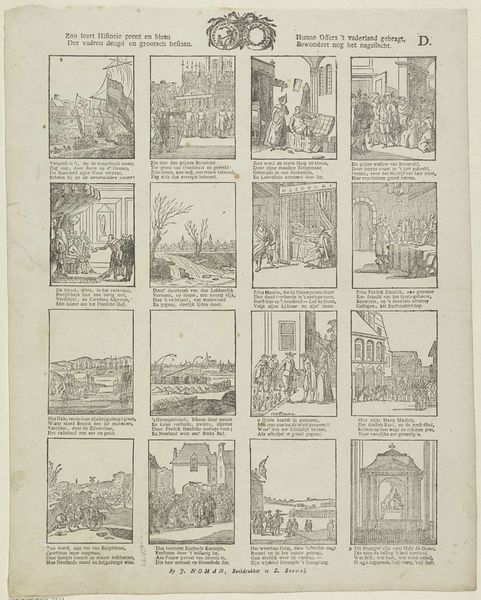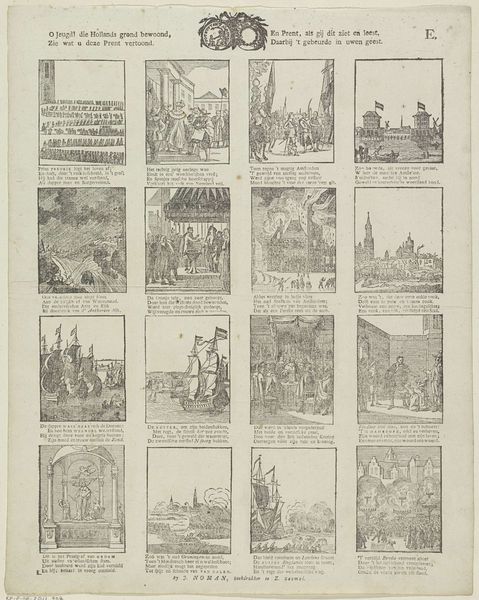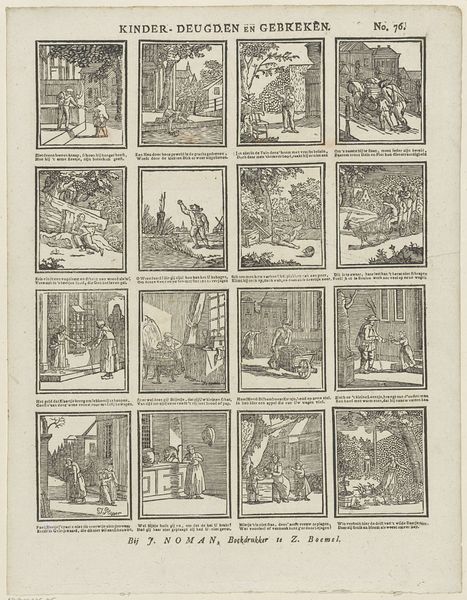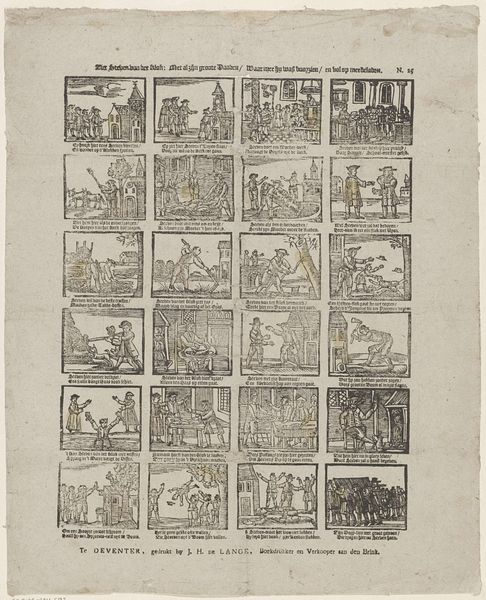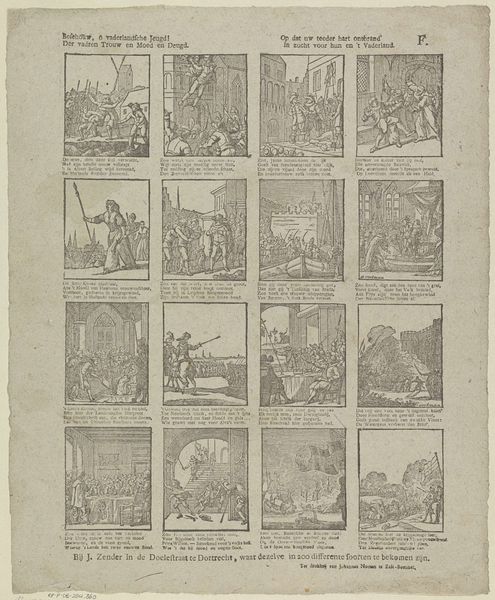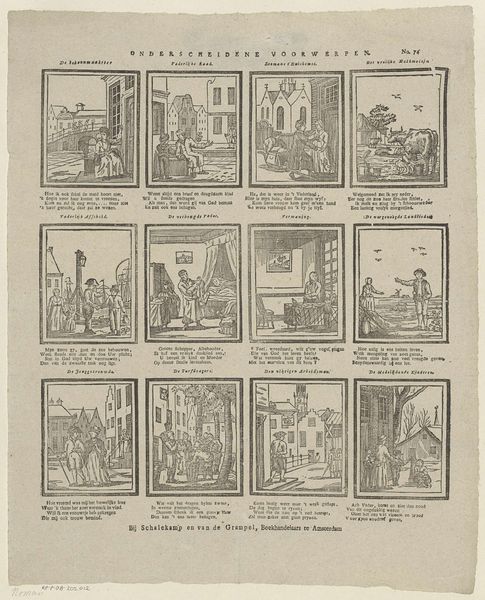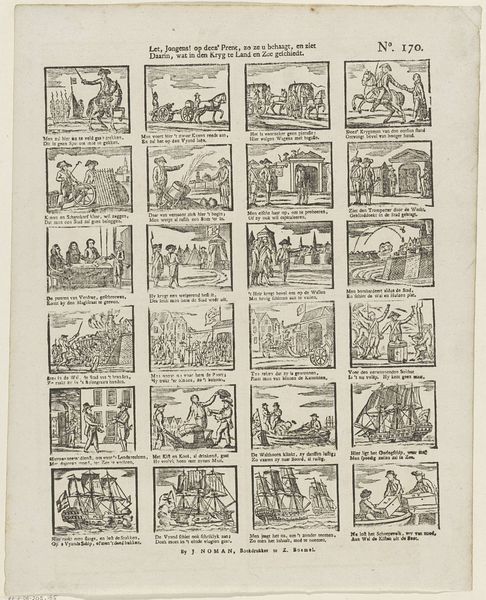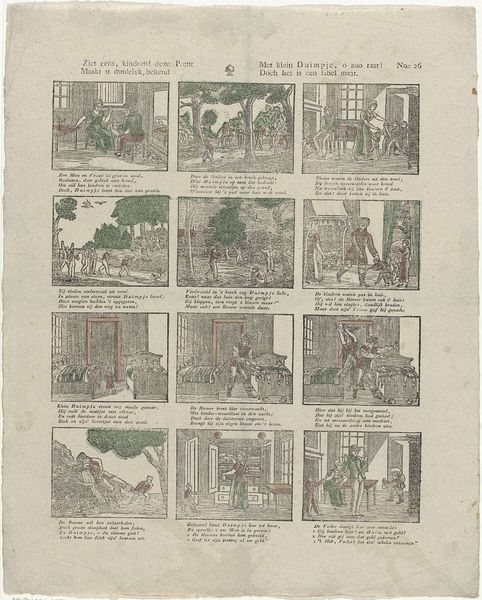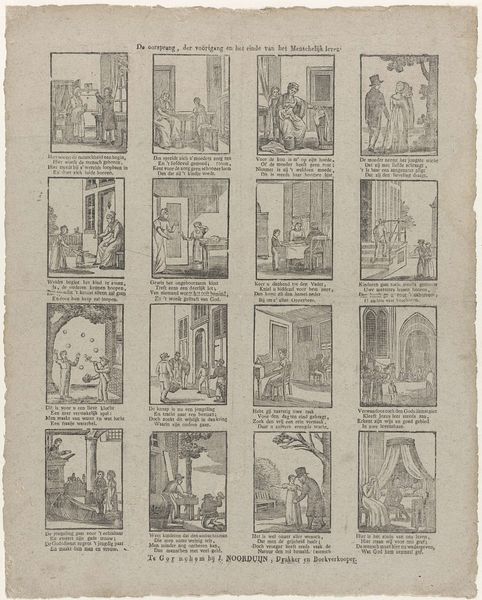
Zoo leert historie prent en blaan / Der vadren deugd en grootsch bestaan / Hunne offers 't vaderland gebragt, / Bewondert nog het nageslacht 1784 - 1813
0:00
0:00
print, engraving
#
comic strip sketch
#
narrative-art
#
dutch-golden-age
# print
#
old engraving style
#
sketch book
#
figuration
#
geometric
#
line
#
history-painting
#
engraving
Dimensions: height 403 mm, width 324 mm
Copyright: Rijks Museum: Open Domain
This print, made by Gerrit Oortman, sometime before 1822, presents a series of narrative scenes, all rendered through engraving. Engraving is an intaglio process, meaning the image is cut into a metal plate, ink is applied, and then the surface is wiped clean. High pressure forces the paper into the incised lines, transferring the image. Because of the force required, engraving was primarily used for commercial printmaking; it wasn't typically considered a fine art. Notice the crisp, precise lines, a testament to the engraver's skill. Each scene, though small, is packed with detail, from the ships at sea to the figures in the town squares. The labor-intensive process, requiring specialized tools and expertise, speaks to a different era of image production, before photography. The images celebrate Dutch history and, like all prints, were designed for wide distribution. The print’s availability allowed for a broad engagement with national identity, turning history into a commodity.
Comments
No comments
Be the first to comment and join the conversation on the ultimate creative platform.
